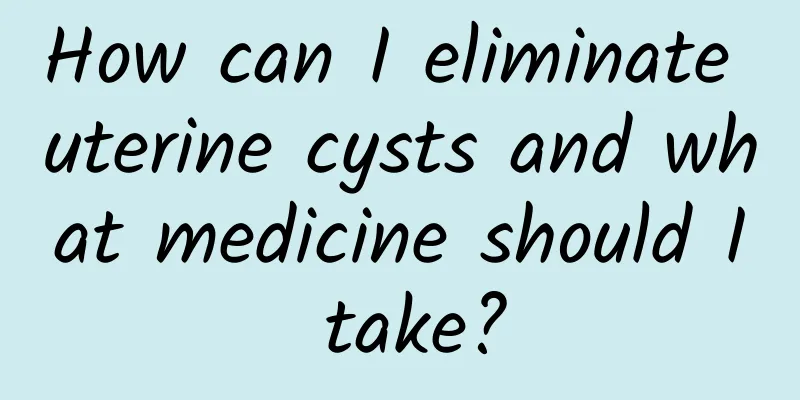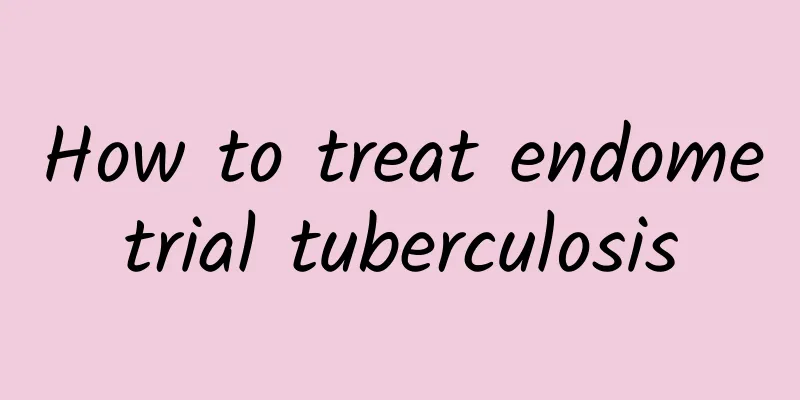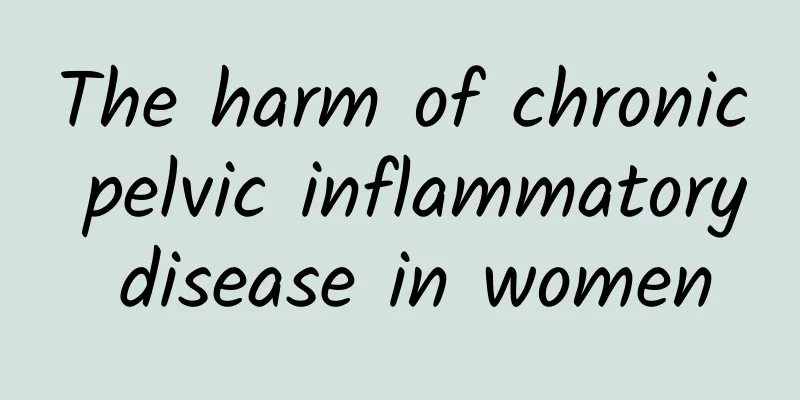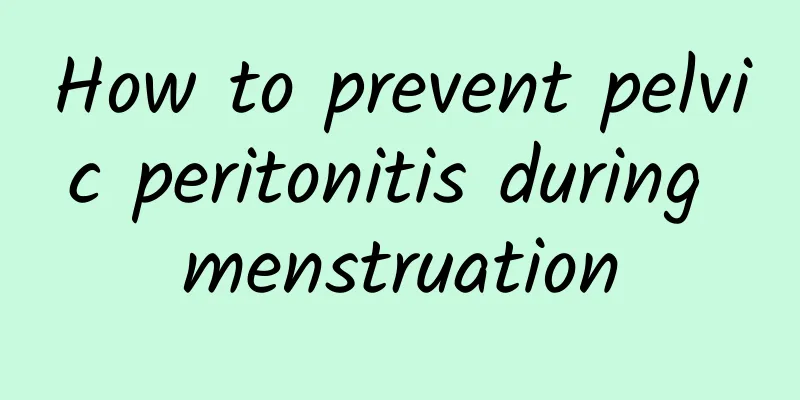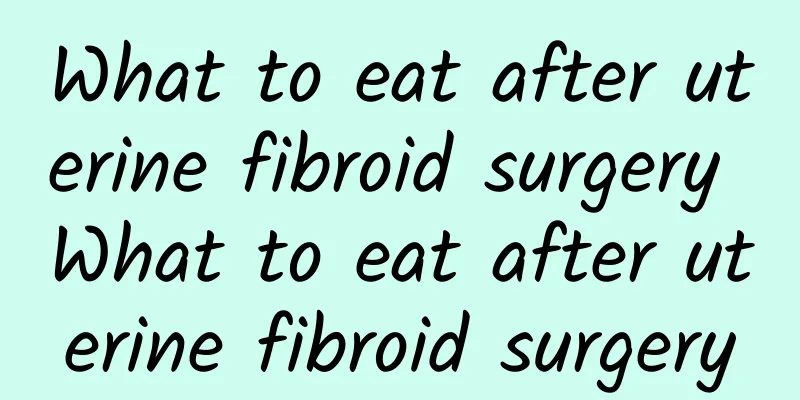Learn more about the treatment of cervical erosion
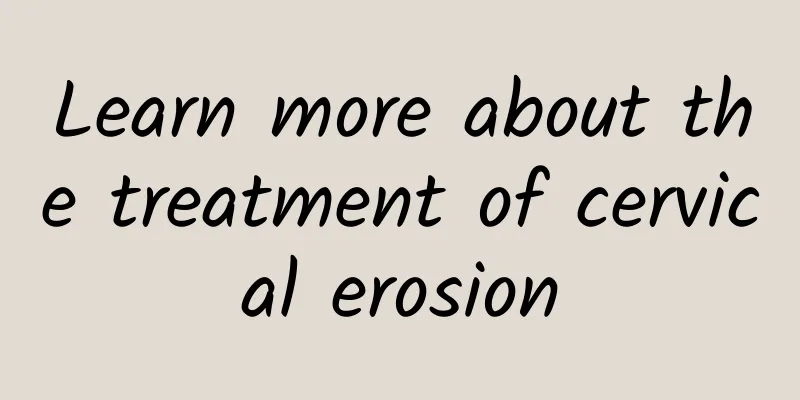
|
What are the main treatments for cervical erosion? What do you know about the treatments for cervical erosion? Since cervical erosion occurs in the private parts of women, more attention should be paid to the choice of treatment for cervical erosion. If cervical erosion is found, active treatment must be taken. Generally speaking, if it is mild cervical erosion with a small area, some local physical therapy can be used; but if it reaches moderate or above, treatment must be started. There are two methods of treatment: drug therapy and physical therapy. It should be noted that for patients with moderate and severe cervical erosion, drug treatment is not effective, takes a long time, and costs a lot. It is recommended to use physical methods to achieve better results. Here I will mainly introduce to you some of the most common physical treatment methods in major hospitals across the country. 1. Microwave therapy. Advantages: Microwaves are used to generate heat effects, which promote the coagulation of proteins around the cervical tissue, achieving the effects of cauterization, coagulation and hemostasis, anti-inflammatory, sterilization and wound healing. The doctor's vision is clear and the operation is simple when using microwave therapy. Discomfort: Generally, there is no pain during the operation, there is little bleeding, the depth of the treatment surface is uniform, and the wound cells repair quickly after the operation. 2. Laser treatment. Advantages: Carbon dioxide lasers are mostly used to emit light beams to irradiate the eroded surface, causing the eroded tissue to carbonize and form scabs. New squamous epithelium can grow after the scabs fall off. Laser treatment has the effects of anti-inflammatory, analgesic, and promoting tissue repair. During the treatment, since the laser knife does not touch the cervical tissue, the depth of the burn is easy to control. Generally, it can be cured in one time. Discomfort: There may be a burning sensation in the vagina during treatment. There will be vaginal discharge or bloody secretions 1 to 2 weeks after treatment. The general healing time is about 1 month. There will be no special discomfort during the operation, and the operation will last about 5 minutes. A few people will bleed during the deciduous removal. 3. Bohm light therapy. Advantages: Through the photothermal composite effect, the eroded tissue protein coagulation, cell degeneration and necrosis, scab shedding, and also promote the body's regeneration and repair, thus achieving the purpose of treatment. Discomfort: No deep blood vessels will be damaged during the operation, no large amount of bleeding will occur after the operation, the operation is simple, the pain is small, and the treatment is not affected by the intrauterine device. 4. Electric iron. Advantages: Use a special electric iron to burn the eroded surface tissue, causing it to necrotize and fall off, but it needs to reach a certain depth during the treatment process to achieve an effective treatment effect. During treatment, the electric iron head is placed in contact with the eroded surface and slightly pressed, moving back and forth from the inside to the outside until it slightly exceeds the eroded surface. Discomfort: There may be mild pain during the operation, but it is tolerable. There will be more vaginal discharge within 2-3 days after the operation, and there may be a small amount of vaginal bleeding within 2 weeks. After 2-3 weeks, the wound will shed and the squamous epithelium will begin to repair. 5. BBT. Advantages: Under the dynamic observation and guidance of B-ultrasound, the radiofrequency treatment source is passed through the vagina, cervix and other natural cavities through the self-coagulation knife, which can accurately locate the lesion site, automatically and accurately control its treatment power, time and treatment range, so that the local tissue of the lesion produces a biological hyperthermia effect, and then the erosion surface coagulates, degenerates and necrotizes, or the lesion tissue of the endometrium is ablated, and finally absorbed by normal tissue or automatically discharged. Discomfort: There will be a slight pain and discomfort, but less bleeding during the operation. 6. LEEP knife. Advantages: It is actually a cervical circumcision, so it is aimed at patients with severe cervical erosion. The high-frequency waves generated by the tip of the electrode will absorb the high-frequency waves and instantly generate high heat after contacting the body due to the impedance of the tissue itself, so as to complete the treatment of cervical erosion. The advantage is that it can achieve very fine surgical effects. There will be no tissue pulling or carbonization, and little damage to surrounding tissues. Discomfort: Because anesthesia will be applied during the operation, there will be no pain, but there may be a little discomfort. The operation time is short, an average of 3 to 5 minutes. There is little pain and the chance of leaving scars is small. 7. Cryotherapy. Advantages: Use a special rapid freezing device to freeze, necrotize, and fall off the diseased tissue on the cervical erosion surface. The commonly used refrigerant is liquid nitrogen, which can reduce the temperature of the freezing head of the freezer to minus 196 degrees Celsius. It is placed on the surface of the cervix to freeze the eroded tissue, necrotize, and fall off, and then grow new epithelial tissue. Cryotherapy does not form scars, so cervical stenosis generally does not occur, which is more suitable for women who want to have children. In addition, freezing can cause local blood vessels to contract and stop bleeding, so after treatment, patients rarely bleed once and can be cured. Discomfort: Freezing can reduce the sensitivity of nerves, thereby having anesthetic and analgesic effects, so the treatment generally has no adverse reactions. A small number of people may suffer from autonomic dysfunction due to low temperature stimulation, and experience dizziness, lower abdominal distension and pain, etc. There is a lot of vaginal discharge after treatment, which lasts for 2-3 weeks. The treatments for cervical erosion are mainly the above points. If you want to know more about the treatments for cervical erosion, you can consult our online experts, who will give you more information about the treatments for cervical erosion. Cervical erosion http://www..com.cn/fuke/gjjb/ml/ |
<<: Understand the main causes of cervical erosion
>>: How can female friends prevent the occurrence of adnexitis?
Recommend
It turns out that eating vegetables first and then meat to lose weight is wrong! Famous weight loss doctor: Eating dietary fiber first can increase appetite
There are many diet instructions on the Internet ...
Three menstrual periods a month
Three menstrual periods a month Three menstruatio...
Diabetes can easily cause muscle weakness! Teacher Wei recommends a little secret for strength training...
Regular exercise, diet and medication are the thr...
Say goodbye to male beer belly: inject testosterone to lose weight
Many men develop beer bellies as they age due to ...
Severe complications of ovarian cysts should be noted
There are many complications of ovarian cysts. Wh...
What are the effects of Dafilin?
Diphylline is a drug commonly used to treat prost...
The main cause of vulvar leukoplakia
Among many gynecological diseases, vulvar leukopl...
The most prominent symptoms of adnexitis are back pain and irritability.
The most prominent symptoms of adnexitis are back...
What should I do if I bleed again a few days after my period? Find out what's going on
The occurrence of such adverse symptoms as bleedi...
The main symptoms of malignant ovarian cysts
Ovarian cysts are often divided into benign and m...
Can a left ovarian cyst turn into a tumor? What should I pay attention to?
Ovarian cysts have no obvious clinical manifestat...
What to do with pelvic fluid accumulation after cystectomy
After some surgeries, especially some gynecologic...
How harmful are frequent abortions for women? Knowing these dangers, would you still dare to have frequent abortions?
With the development of technology and the excess...
Causes of bacterial vaginosis
It is necessary for us to understand the causes o...
What are the treatments for cervical precancerous lesions?
How effective is surgery for the treatment of cer...
